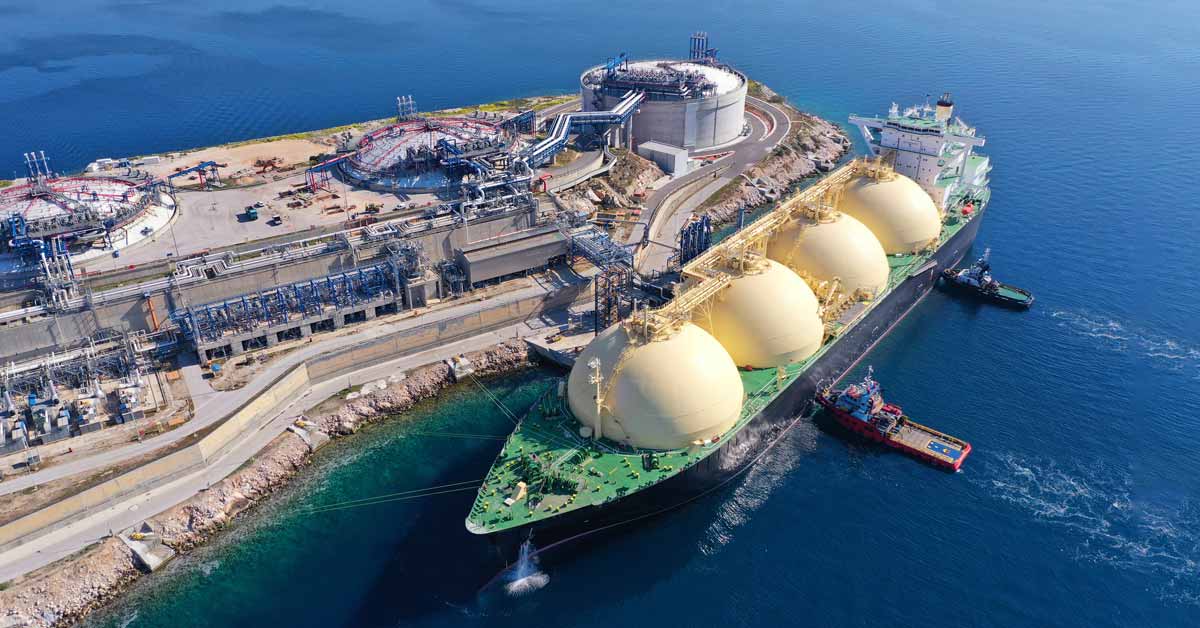
The global maritime industry continues to show progress when it comes to renewable fuel. Liquefied natural gas (LNG) has emerged as a cleaner-burning alternative to conventional marine fuels like fuel oil and marine gasoil. It offers a notable reduction of up to 15% in greenhouse gas (GHG) emissions.
While LNG is a clear improvement in the short term, it alone won’t be enough to meet the climate targets set for 2030 and beyond. The true future of marine fuel lies in low-carbon alternatives that can harness the technology as LNG. And a promising new partnership in Texas aims to push that future closer to reality.
A Strategic Partnership with Promise
Loa Carbon, a leading project developer focused on e-methanol and e-methane technologies, has signed a letter of intent with Galveston LNG Bunker Port. The goal is to develop and supply low-carbon e-methane fuel to the maritime sector through Houston’s port system.
It’s a bold move that aligns well with broader decarbonization trends. The partnership also plays to Texas’s growing strengths in renewable energy and LNG infrastructure.
The deal is more than just a handshake. It’s a calculated step toward bridging today’s transition fuel (LNG) with tomorrow’s low-carbon gas solutions.
E-Methane, a synthetic fuel made by combining green hydrogen with captured carbon dioxide, represents one of the most promising options for reducing shipping emissions. An added advantage is that it can also leverage preexisting LNG infrastructure.
Why Texas? Why Now?
Producing e-fuels like e-methane is neither simple nor cheap. They require massive amounts of renewable electricity and a reliable source of carbon dioxide. Fortunately, Texas is emerging as a rare sweet spot.
The state boasts abundant and competitively priced renewable power from wind and solar farms. Growing capacity is also on the way. These power sources help to mitigate one of the biggest cost drivers of e-fuel production: electricity.
As for carbon dioxide feedstock, Loa Carbon plans to tap into a resource that’s typically considered waste—landfill emissions.
In the past, capturing CO₂ from landfill sites was technically and economically difficult (if not completely financially unfeasible). But with the rapid growth of the renewable natural gas (RNG) industry, significant volumes of excess CO₂ are now being produced as a byproduct. Loa Carbon intends to capture and utilize this surplus, turning a waste stream into a valuable input for e-methane production.
Texas Supercharged by US Incentives
One of the biggest accelerators for this project lies in US federal policy. The Inflation Reduction Act (IRA) has positioned the US as one of the most attractive regions globally for clean fuel investments, particularly through generous tax incentives.
For example, producers of green hydrogen, a key component of e-methane, can qualify for up to $3 per kilogram in tax credits for 10 years, dramatically improving project economics. Similarly, under Section 45Q, carbon capture and utilization (CCUS) activities can generate an additional $60 per metric ton of CO₂ used in fuel synthesis.
These incentives make a compelling case for developing e-methane projects in the US. Locations like Texas allow infrastructure, talent, and feedstocks to all come together for excellent potential.
But there’s a catch to all the incentives. To access these credits, construction must begin before the end of 2027. The clock is ticking.
Houston’s LNG Advantage
Houston already plays a pivotal role in global LNG markets. The US has become the world’s largest LNG exporter, and the Gulf Coast is at the heart of this activity. As more maritime players switch to LNG-powered vessels, it’s logical that LNG bunkering hubs like Galveston will grow in strategic importance.
Despite this valuable position, Houston currently sits outside the top 10 global LNG bunkering ports. But the right investment in low-carbon infrastructure, including e-methane, could rapidly change that status. By combining LNG expertise with next-generation fuels, Houston is uniquely positioned to leap ahead and become a leader in clean marine energy.
Momentum Meets Deadline in Houston e-LNG
Loa Carbon’s letter of intent signals more than optimism. It marks the beginning of what could be a transformative shift in marine fuel supply chains.
For this promise to materialize, speed and execution will be crucial. Delays past the 2027 tax credit deadline could derail the financial viability of the project.
The vision is there. The policy landscape is favorable. The technical ingredients are lining up. Now, it’s up to Loa Carbon and its partners to deliver before time runs out.
Prima CarbonZero: Biofuel and Feedstock Data Made Easy
This post comes from an analyst report featured in Prima CarbonZero's ResourceWise's online platform for market intelligence and pricing data on biofuels, feedstocks, and tickets. With a laser focus on upstream fuel sourcing, our data and insights can help your organization effectively plan and strategize during periods of high uncertainty and market instability.
Learn more about our platform and schedule a customized walkthrough with one of our experts today.




